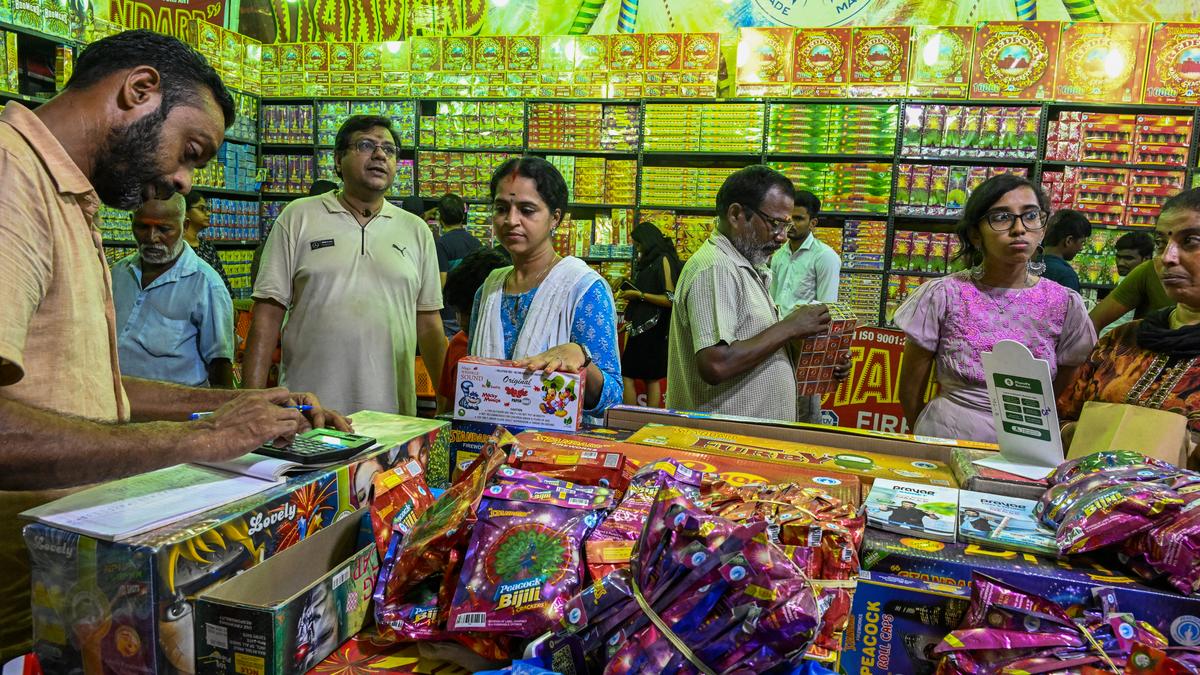
A string of disappointments
The Hindu
Sivakasi fireworks industry faces decline due to Supreme Court ban on barium nitrate and joined crackers.
The century-old fireworks industry in Sivakasi is facing a significant decline in production this year. This is because the Supreme Court had reiterated its ban on barium nitrate, a key ingredient in the manufacture of crackers, and imposed restrictions on joined crackers.
The businessmen in Sivakasi, the ‘Fireworks Capital of India’ for decades, say production has reduced by at least 30% without the manufacture of joined crackers. Joined crackers consist of multiple individual crackers connected together with a fuse. When one firecracker is lit, it ignites the others in succession.
Ballpark estimates, revealed by manufacturers, show that over 300 factories make joined crackers in Sivakasi and neighbouring villages. “Sound crackers account for 40% of the total production in Sivakasi. And of the sound products, around 20% were joined crackers,” says A.P. Selvarajan of Kaliswari Fireworks. “Many joined cracker manufacturers have kept their premises closed for months. And their workers have migrated to other factories,” he said.
The Supreme Court had said “thousands, even a lakh of crackers on one string going off at night, and several such strings going off in the neighbourhood” caused accumulation of waste and pollution. “However, the fact is that no one manufactured such a long chain of crackers anywhere in India, nor is it permitted under the Explosives Rules,” points out S. Srinivasan, a member of Sivakasi Fireworks Manufacturers’ Association (SIFMA).
When chain crackers were banned, even the smallest, such as the 28-wala chorsa or tukkada crackers made by 80% of the manufacturers, were eliminated. This also led to financial losses for the manufacturers as the industry is dependent on bank loans and borrowings.
A. Asaithambi, partner at Lord Fireworks and SIFMA president, says, “These garland crackers were most popular, not only during Deepavali but also at other events.” Political events and celebrations in movie theatres were incomplete without these garland crackers burst at public places. “They would sell like hot cakes throughout the year,” he notes.
The production and bursting of garland crackers was well settled by the Supreme Court in 2004. The Central government had allowed production, sale, and use of any cracker or joined crackers generating a noise level within 125 decibels (dB) at a distance of four metres in 1999. However, a case of noise pollution was made out against the bursting of joined crackers again. After deliberations, the Centre arrived at a formula known as 5 log 10 (N) dB for joined crackers.













